Here's A Extensive List Of Character Flaws/Addictions To Consider For Your Storytelling:
Here's a extensive list of character flaws/Addictions to consider for your storytelling:
1. Stubbornness
2. Impulsiveness
3. Jealousy
4. Indecisiveness
5. Arrogance
6. Insecurity
7. Impatience
8. Manipulativeness
9. Hot-tempered
10. Perfectionism
11. Distrust
12. Procrastination
13. Selfishness
14. Pessimism
15. Dishonesty
16. Greed
17. Cowardice
18. Lack of empathy
19. Overly competitive
20. Control freak
21. Lack of ambition
22. Oversensitivity
23. Laziness
24. Lack of self-discipline
25. Addiction
26. Closed-mindedness
27. Lack of assertiveness
28. Impulsivity
29. Materialistic
30. Lack of accountability
31. Inflexibility
32. Moody
33. Overly critical
34. Judgmental
35. Naivety
36. Attention-seeking
37. Suspiciousness
38. Overprotectiveness
39. Ingratitude
40. Vengefulness
41. Envy
42. Indulgence
43. Disloyalty
44. Self-centeredness
45. Negativity
46. Manipulative
47. Disorganized
48. Lack of self-awareness
49. Irresponsibility
50. Intolerance
51. Overthinking
52. Restlessness
53. Excessive need for control
54. Rigidity
55. Overly trusting
56. Recklessness
57. Narcissism
58. Escapism
59. Gullibility
60. Lack of ambition
61. Inability to forgive
62. Excessive need for validation
63. Attention-seeking behavior
64. People-pleasing
65. Overprotectiveness
66. Self-doubt
67. Passive-aggressiveness
68. Inability to handle criticism
69. Lack of boundaries
70. Superiority complex
Remember, a well-rounded character doesn't need to possess all of these flaws. Select a few that resonate with your character's personality, background, and story arc. Balancing flaws with strengths and vulnerabilities will help create multi-dimensional and relatable characters.
Happy writing!
Follow me on my IG for more Content. https://instagram.com/saraswritingtipps?igshid=NTc4MTIwNjQ2YQ==
More Posts from Nefaralous and Others
Hello,
I’ve had this page for a while, but I might start using it more seriously to post some of my writing.
I always enjoyed writing and wrote a lot when I was younger and through most of school, but once I hit high school I just stopped, mainly because I didn’t have a lot of free time, but I was always self conscious of my writing, too. What if it’s no good? What if no one likes it? It brought me joy, though, and I believe that’s the most important thing.
I have a few ideas for short stories and even longer tales I’m hoping to work on and (maybe) share here.
So, if anyone actually reads this, or anything else I put out there, thank you & I hope you enjoy it.
✨🖤🖋️📚
Dappled sunlight streams through the trees. The filtered light warms the skin I bare to nature, clothes haphazardly shed and forgotten, a bread crumb trail leading to the blue lake. Wading into the water, I wash away the dirt and sweat dried to my skin- cleansing away my sins better than any baptism could ever hope to achieve.
- salvation.
How to improve your writing style : a 5-steps guide.
Intro : I love the 5-steps format, don’t mind me. Again, this essay is based on my personal experience.
Read in different genres. Ok, I know you’ve probably heard this advice more than you can count but did you ask yourself why it is so important ? You probably wonder ‘‘How reading some historical fiction will help me writing my sci-fi novel ?’’ For that simple reason my friend : they meet different purposes. You don’t know how to describe a castle ? It’s okay, historical fiction got your back. Because it aims at something more realistic and accurate, it would tend to be more specific and detailed when it comes to describing clothes, furniture, places and so on. Why ? Because, most of the time, THEY ACTUALLY EXISTED. Take a closer look at how it is done and draw your inspiration from it (but please avoid plagiarism it’s bad - and illegal)
Take notes and CLASSIFY them. To make reading somehow useful, you have to actually make it concious, which means you have to write things down to remember them. When I come across a description I like, I tend to takes notes of the figures of speech that are used and class them, so when I have to write a similar scene, I have an idea of what have been already used, and weither or not it achieved its goal. I am NOT talking about COPY another author’s style !!!! It’s about finding inspiration and new approaches. I also tend to take notes of the new words I wish to incoporate into my writing. The thesaurus is my new bestie.
Rewrite the same scene from different POVs. First of all, it’s fun. And it’s a really good way to spot quirky formulations. For instance, if you describe a ship, the captain’s POV should be different from that of a simple observer. The first one would be naming each part princisely whereas the other would only be admiring the surface without knowing anything. If the caption is the same for both POVs, maybe you should consider write your passage again (or have a good reason, like a strong amateurism for the mere observer). It’s go hand in hand with coherence - but it would be an essay for another time (maybe).
Read your text aloud. I put major emphasis on that one because it’s as underated as reading books for various genres. You have no idea how much we DON’T speak the way we write. Even dialogues are crafted in our stories - so make sure to give them proper attention. (i even read my email aloud but-). I KNOW how cringey it might be as I am doing it MYSELF but the benefits are worth the 35-minutes shame I endure from my own mess. Before you can shine, you have to polish (shout out to the one who said that first if it’s not me).
Take a step back. I strongly advice you to let some time pass before reading your text again and profreading it. It will cast a new light upon your work and with fresh eyes you’d be more likely able to spot what needs to be erased or rephrased.
That’s all for me today. Since I would be entering my proofreading phase for my writing contest, the next essay would probably about proofreading (with examples from my own novel ?). Unless someone wants me to write on a specific subject first.
Gentle reminder that I’m still French and not a native so please forgive my dubious grammar and outrageous mispellings.
Body language cheat sheet for writers
As a writer, understanding and incorporating body language into your storytelling can greatly enhance your characters and their interactions. Here's a cheat sheet to help you describe body language effectively:
Facial Expressions:
* Raised eyebrows: Surprise, disbelief, or curiosity.
* Furrowed brow: Concentration, confusion, or frustration.
* Smiling: Happiness, amusement, or friendliness.
* Frowning: Disapproval, sadness, or concern.
* Lip biting: Nervousness, anticipation, or tension.
Eye Movements:
* Eye contact: Confidence, interest, or honesty.
* Avoiding eye contact: Shyness, guilt, or deception.
* Narrowed eyes: Suspicion, skepticism, or concentration.
* Wide eyes: Shock, fear, or surprise.
* Rolling eyes: Exasperation, annoyance, or disbelief.
Gestures:
* Crossing arms: Defensiveness, disagreement, or discomfort.
* Nervous fidgeting: Anxiety, restlessness, or impatience.
* Pointing: Assertiveness, emphasis, or accusation.
* Open palms: Honesty, openness, or sincerity.
* Hand on chin: Deep thought, contemplation, or evaluation.
Posture and Movement:
* Slumped shoulders: Defeat, sadness, or fatigue.
* Upright posture: Confidence, attentiveness, or authority.
* Pacing: Restlessness, agitation, or contemplation.
* Tapping foot: Impatience, annoyance, or frustration.
* Leaning in: Interest, engagement, or curiosity.
Touch:
* Hugging: Affection, comfort, or warmth.
* Handshake: Greeting, introduction, or agreement.
* Patting on the back: Encouragement, praise, or camaraderie.
* Clenched fists: Anger, determination, or frustration.
* Brushing hair behind the ear: Nervousness, coyness, or flirtation.
Mirroring:
* When two characters unconsciously mimic each other's body language, it indicates rapport, connection, or empathy.
Nodding:
* A subtle nod can convey agreement, understanding, or encouragement.
Crossed legs:
* Crossed legs can indicate relaxation or a casual, nonchalant attitude.
Tapping fingers:
* Impatience, anticipation, or nervousness can be expressed through rhythmic finger tapping.
Hand on the chest:
* Placing a hand on the chest can convey sincerity, empathy, or a heartfelt emotion.
- Tilting the head:
* Tilting the head to the side can suggest curiosity, attentiveness, or interest.
Rubbing the temples:
* Rubbing the temples can indicate stress, fatigue, or a headache.
Chin stroking:
* Stroking the chin while in thought can portray contemplation, decision-making, or intellectual curiosity.
Arms crossed behind the back:
* This posture can indicate authority, confidence, or a composed demeanor.
Tilted body posture:
* Leaning slightly towards someone can suggest interest, attraction, or engagement in a conversation.
Biting nails:
* Nail-biting can reveal anxiety, nervousness, or tension.
Foot tapping:
* Rapid or impatient foot tapping can show agitation, restlessness, or eagerness.
Squinting:
* Squinting the eyes can signal suspicion, doubt, or an attempt to focus on something.
Shifting weight from foot to foot:
* Shifting weight can imply discomfort, unease, or anticipation.
Covering the mouth while speaking:
* This gesture can indicate hesitation, embarrassment, or the desire to hide something.
Remember that body language can vary across different cultures and individuals, so consider your character's background and personality while describing their movements. Additionally, body language is best used in combination with dialogue and internal thoughts to create a more nuanced portrayal of your characters.
Happy writing!
concept: instead of hedwig, Harry goes into the pet store and this little snake in the back of the store talks to him, obviously gets his attention more than the other animals, and harry feels sorry for it so he takes it home. Then the snake helps Harry throughout his years at hogwarts as harry carries it wrapped around his hand all like “pssssst, haaarryyy, the dark lord isss coming sss” or just petty shit like “haaaarrryy, now is the time, assskkk out cho chaaannngg”
Quick Tips for Writing Emotional Tension
They act like they don’t care, but we all know they’re just avoiding a massive emotional explosion.
One of them starts to spill their feelings, then clams up like, “Uh, never mind…” Cue the frustration.
One character throws out something super personal like it’s no big deal, but you can tell the other one’s like, “Wait, what?”
They let something slip that they were totally not ready to share, and then they freeze like, “Did I just say that?”
The “I’m fine” smile (but they’re not). One gives this shaky smile that doesn’t fool anyone, especially the other character.
They almost grab each other’s hand or hug, then they hesitate, and the moment passes. UGH, so frustrating!
One of them’s on the verge of tears but is trying sooo hard not to lose it. You can feel how much it hurts.
They talk about literally everything except the thing that’s actually bothering them. So. Annoying.
They used to be shoulder to shoulder, but now they’re standing a whole three feet apart like something big changed.
One’s suddenly acting like they barely know the other, being all polite and formal, and you just know there’s more going on.
Use character to appearance to do more:
They say don’t judge a book by it’s cover, but appearance sure can say a lot. Unfortunately when writing (or even drawing) it is more than easy to forget that factor. Using character appearance to describe the world, add personality to the character, and give the reader more information does wonders.
It makes sneaking in character appearance much easier, and gives the writer plenty of chances to expand on the world on their page.
Things you can use character appearance to do (but not limited to)
Hint at a character’s economic status
Add personality to a character
Add to a character’s backstory
Make notes about a character’s health
Worldbuild the fashion
Describe a character’s occupation
Make references to a character’s passion or hobby
Hint at a character’s relationship status
How a character feels about their own appearance
Family relations
Hint at a character’s education
Subvert expectations
Explore character’s potential gender identity
Align the character alongside dynamics or trope
Explain the time frame the story takes place in
Hint at the level of technology in a world
Describe a character’s culture, race, ethnicity, etc.
I am a sensitive person.
I feel things deeply, even if it doesn’t always show. I learned to downplay my emotions, to water myself down in an attempt to be more palatable.
Because when enough people tell you that being sensitive in a bad thing, you start believing them.
-a work in progress I’m posting.

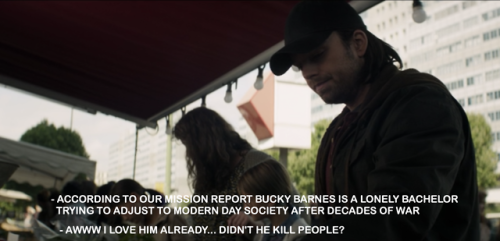
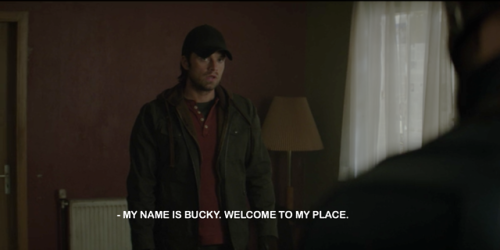
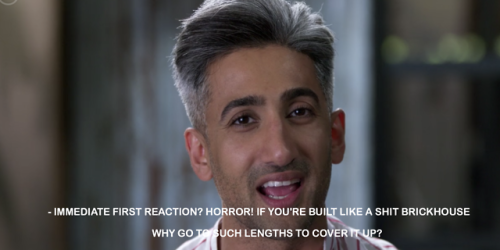
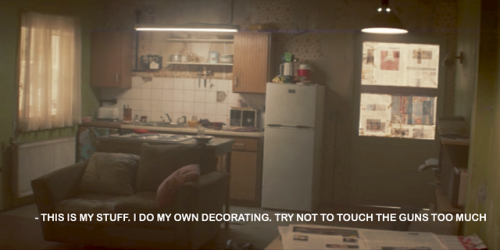
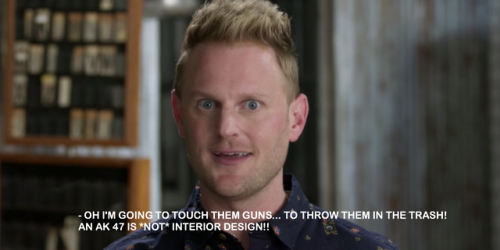
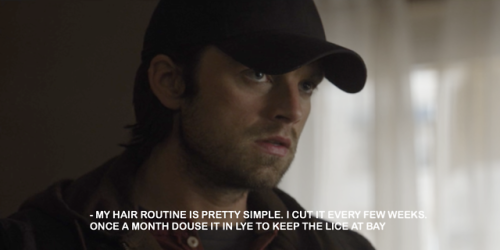
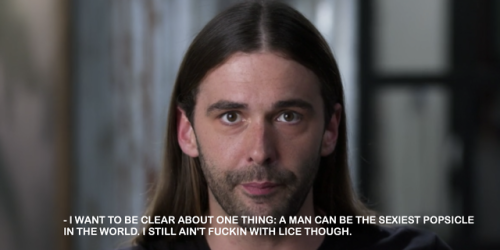
and the end result:

bonus:

-
 restlessdaydreaming liked this · 1 week ago
restlessdaydreaming liked this · 1 week ago -
 lillais17 liked this · 1 month ago
lillais17 liked this · 1 month ago -
 dinglebongus liked this · 1 month ago
dinglebongus liked this · 1 month ago -
 sewriting reblogged this · 2 months ago
sewriting reblogged this · 2 months ago -
 ssunl1ght reblogged this · 3 months ago
ssunl1ght reblogged this · 3 months ago -
 ignisejona liked this · 4 months ago
ignisejona liked this · 4 months ago -
 transparententhusiastmentality liked this · 5 months ago
transparententhusiastmentality liked this · 5 months ago -
 cageofbxrds liked this · 5 months ago
cageofbxrds liked this · 5 months ago -
 pen-and-laptop reblogged this · 6 months ago
pen-and-laptop reblogged this · 6 months ago -
 nefaralous reblogged this · 6 months ago
nefaralous reblogged this · 6 months ago -
 wowdragonhead liked this · 6 months ago
wowdragonhead liked this · 6 months ago -
 4rtina43000 liked this · 8 months ago
4rtina43000 liked this · 8 months ago -
 princesxxse liked this · 8 months ago
princesxxse liked this · 8 months ago -
 n33mesis liked this · 8 months ago
n33mesis liked this · 8 months ago -
 nocturnaldaydreamer liked this · 9 months ago
nocturnaldaydreamer liked this · 9 months ago -
 invisible-stringss liked this · 9 months ago
invisible-stringss liked this · 9 months ago -
 elainealouette reblogged this · 9 months ago
elainealouette reblogged this · 9 months ago -
 auroraescritora liked this · 9 months ago
auroraescritora liked this · 9 months ago -
 starrolling liked this · 10 months ago
starrolling liked this · 10 months ago -
 kaysplanet liked this · 10 months ago
kaysplanet liked this · 10 months ago -
 jenna12381 liked this · 10 months ago
jenna12381 liked this · 10 months ago -
 yourlocalcryptidinthewoods liked this · 10 months ago
yourlocalcryptidinthewoods liked this · 10 months ago -
 steddiefvcker liked this · 10 months ago
steddiefvcker liked this · 10 months ago -
 domion96 liked this · 10 months ago
domion96 liked this · 10 months ago -
 luvdaze liked this · 11 months ago
luvdaze liked this · 11 months ago -
 paula-in-dreamland reblogged this · 11 months ago
paula-in-dreamland reblogged this · 11 months ago -
 wolfpupyey liked this · 11 months ago
wolfpupyey liked this · 11 months ago -
 adhdnursegoat reblogged this · 11 months ago
adhdnursegoat reblogged this · 11 months ago -
 adhdnursegoat liked this · 11 months ago
adhdnursegoat liked this · 11 months ago -
 fallenneziah liked this · 11 months ago
fallenneziah liked this · 11 months ago -
 greenwingspino liked this · 1 year ago
greenwingspino liked this · 1 year ago -
 judgy-hounds reblogged this · 1 year ago
judgy-hounds reblogged this · 1 year ago -
 minhosbitterriver liked this · 1 year ago
minhosbitterriver liked this · 1 year ago -
 stardustedseafoam reblogged this · 1 year ago
stardustedseafoam reblogged this · 1 year ago -
 capricornsix liked this · 1 year ago
capricornsix liked this · 1 year ago -
 takuyalovesdisney liked this · 1 year ago
takuyalovesdisney liked this · 1 year ago -
 andsensibility liked this · 1 year ago
andsensibility liked this · 1 year ago -
 evanbuckleyswifey liked this · 1 year ago
evanbuckleyswifey liked this · 1 year ago -
 captaincvans liked this · 1 year ago
captaincvans liked this · 1 year ago -
 irclet liked this · 1 year ago
irclet liked this · 1 year ago -
 gleeekxoxo liked this · 1 year ago
gleeekxoxo liked this · 1 year ago -
 sleepychocolatier liked this · 1 year ago
sleepychocolatier liked this · 1 year ago -
 breezelight2 liked this · 1 year ago
breezelight2 liked this · 1 year ago -
 essenceofcreativedisposition liked this · 1 year ago
essenceofcreativedisposition liked this · 1 year ago -
 riverxreyes00 liked this · 1 year ago
riverxreyes00 liked this · 1 year ago -
 ac12206 liked this · 1 year ago
ac12206 liked this · 1 year ago -
 damnitimasimp liked this · 1 year ago
damnitimasimp liked this · 1 year ago -
 chimerazodiac liked this · 1 year ago
chimerazodiac liked this · 1 year ago -
 aeiousky liked this · 1 year ago
aeiousky liked this · 1 year ago -
 oraclestory liked this · 1 year ago
oraclestory liked this · 1 year ago

